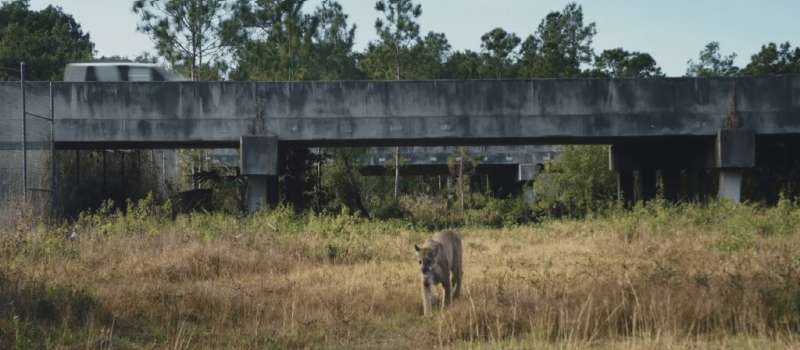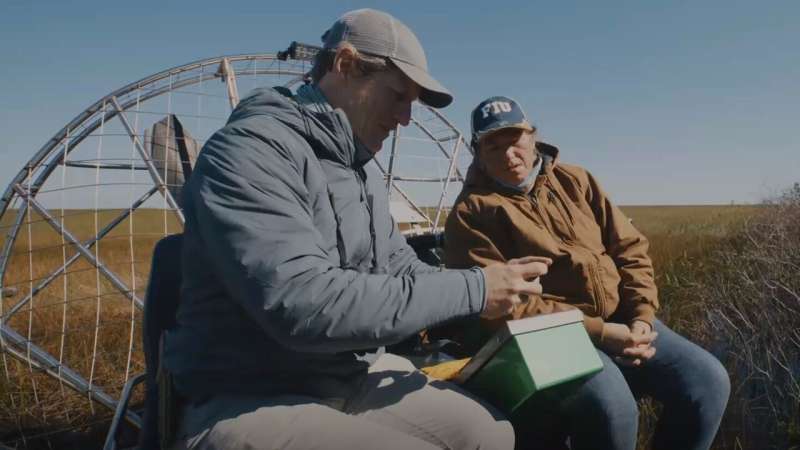This article has been reviewed according to Science X's editorial process and policies. Editors have highlighted the following attributes while ensuring the content's credibility:
fact-checked
trusted source
proofread
How restoring the Everglades can save the Florida panther

The Everglades is an essential natural resource that provides fresh drinking water for much of Florida and serves as habitat for the endangered Florida panther, on which FIU's beloved mascot Roary is modeled. FIU ecosystem researcher and ecology professor John Kominoski has studied the Everglades for 11 years to understand the interface between land and water. Kominoski currently leads the Florida Coastal Everglades Long Term Ecological Research Program, an ongoing research study that seeks to understand the impact of climate change on coastal ecosystems since 2000.
"One of the most pressing challenges in the Everglades is saltwater intrusion from rapid sea-level rise," Kominoski said. This is an outcome of our climate getting warmer, he explained. As sea levels rise, saltwater makes its way further inland. The problem comes in when native plants and soils can no longer keep up with the rapid change in salinity, leading to collapses in ecosystems.
Kominoski added, "The other big challenges in the Everglades are invasive species, habitat loss and urbanization. All these things are putting pressures on a system that has some capacity to adapt but has limits." These issues have become the primary threats to the remaining population of Florida panthers. Recently, Kominoski discussed these issues at a screening of the National Geographic documentary "Path of the Panther," which focuses on tracking and protecting the endangered Florida panther.
So what happened to Roary's kind?
"We have fragmented the Everglades to control hydrology, grow food and build tropical urban paradises, continually reducing the panther's habitat," said Kominoski. "As the documentary details, a male panther needs an area that is larger than metropolitan Orlando for habitat in order to breed successfully. That's a huge area."
There have been efforts to increase this habitat range. Kominoski said. "The Comprehensive Everglades Restoration Plan is the largest effort of its kind in the world and is supported by state and federal partnerships. It is trying to make connections in fragmented parts of the Everglades." This is done by filling in some of the existing canals that divide the Everglades, lifting highways to allow water to flow beneath unobstructed. Other efforts include wildlife corridors or "bridges" to bring ecosystems together.
According to Kominoski, the average person can also contribute to Everglades conservation by supporting organizations that promote protecting wildlife habitat, visiting and recreating in the Everglades to appreciate its beauty and serenity, and voting against further development of wildlands.

"We're going to have to shift how we interact with nature," Kominoski said, "We're going to have to think, move and adapt with a vision of balancing human and wildlife needs. FIU has done, and continues to make, wonderful discoveries for conservation research and in understanding the Everglades," he added.
"We need to continue to educate others about our natural world and encourage their engagement in its conservation. There's the science of what we do, and then there's also the advocacy that comes with it to help people understand how we are connected to these issues, and these critically important places, and what we can do about it. We should push for Florida to be more sustainable and have less of an environmental impact and then value the areas that we're saving through research, conservation, preservation and restoration. I think we are on the right path," he concluded.
Provided by Florida International University


















